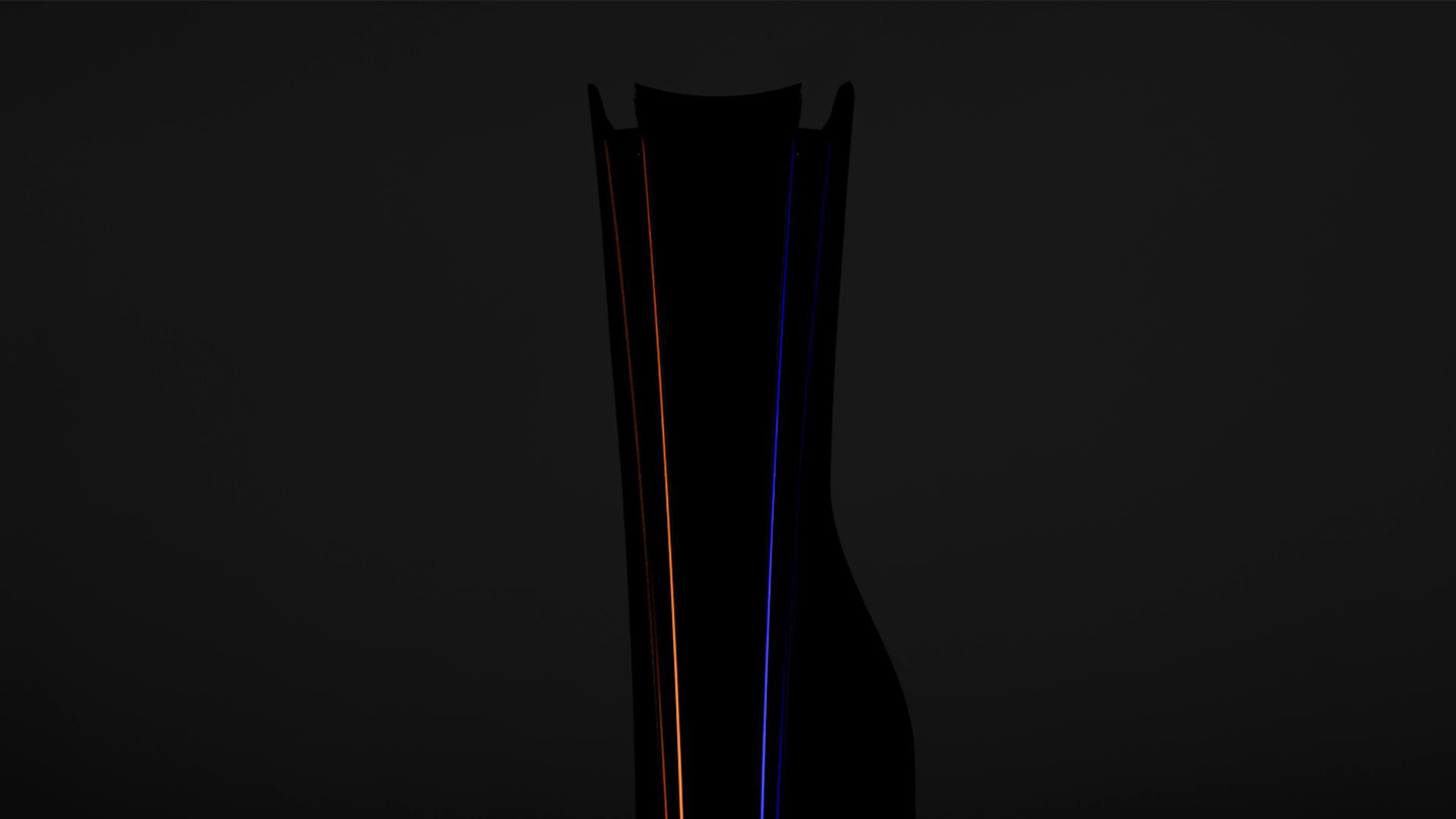There’s a reason our cars aren’t also boats. It’s often as hard as it is risky to combine two very different functions into one package, especially when designing a system to do one thing well can be hard enough. That’s why, as I sat in front of my computer taking stock of the 20+ hours I spent playing Endless Dungeon, I couldn't help but smile at the sheer audacity on display. There’s no other way to describe the daring it must have taken to create this hybrid twin-stick shooting, tower defending, science fiction roguelite. Those are three very different genres all their own, so to take them all on simultaneously and make the result work so well is borderline miraculous.
Endless Dungeon is set aboard The Station, a massive, multi-leveled space station that belonged to an enigmatic race known as the Endless. Now it is abandoned, save for the monsters on each floor and the small cast of colorful heroes trapped aboard with them. Their only hope is that reaching the Station's Core and powering on the Reactor will reactivate the station, and allow everyone to escape. It's a simple setup, with just enough mystery to be intriguing, told in a really attractive, colorful, comic book-esque art style.
At first glance, Endless Dungeon looks and plays like a solid, cyberpunk infused twin-stick shooter akin to something like The Ascent. Aiming and shooting while in motion is a breeze on keyboard or gamepad, and how you approach combat varies widely depending on which of the eight playable characters you control. Sweeper, for example, is an in-over-his-head janitor who carries light weapons like pistols, but can control the flow of battle using his Slippery When Wet ability to slow enemies trapped in soapy waters. Meanwhile, Zed is a punk rock influenced soldier purely focused on damage who uses heavy weapons like rifles and rocket launchers, with a wide-arcing Sonic Boom attack.
Generally, the goal is to move a slow, four-legged robot called the Crystal Bot from its dock to an exit hidden somewhere in each level, and protect it while it hacks open the door. What makes it challenging is that you don’t actually know where that exit is, and maps take the form of a series of rooms separated by ominous bulkheads. Each door you open could lead toward your destination, hold power ups, activate traps, or expose you to a monster spawner. A danger meter will slowly build, and when it crescendos waves of enemies will attack from any discovered monster spawners. That oscillation between tension during exploration and adrenaline during action is brilliantly paced.
The thing that really impressed me about the levels is how purpose built they all feel despite being procedurally generated. There’s a great rhythm to how maps alternate between long linear pathways and more interconnected hubs, with impressive unique rooms that feel like they appear at carefully crafted junctures. Reaching the end of a difficult floor, low on health with a wave of enemies at your heels, and having to choose between multiple doors feels like a life-or-death game of Let’s Make a Deal, where door number three is just as likely to hold salvation as certain doom.
The snarling beasts that represent that doom bring a lot of fun variety. There are four distinct monster types, including the grotesque biological Blobs and out of control mechanical Bots. Each faction of monsters has an assortment of unit types, special abilities, and elemental affinities or weaknesses. Forming a firing line to cut down a swarm of Nibblers and Nasquitos from the Bugs with flames is a great strategy, but that won’t get you anywhere when the fire resistant Blurs arrive, especially when their Ghost units use their ability to phase out of reality, then reappear behind you in order to hammer on the Crystal Bot directly. Some enemies, like the front-armored Boneheads of the Blobs, are more annoying than fun to fight, but the strategic push and pull of how to deal with different mobs of monsters goes a long way toward keeping things fresh, especially when different sets of enemies start to mix.
There is a large selection of weapons to help make the job easier. Each hero has a default starting gun, and you can find more in treasure chests hidden throughout each floor. There are a few standouts, like the Campfire, a flamethrower that encircles your character in rings of fire, though most of the arsenal feels like the same couple of weapons reskinned for each element. Shooting different colors of otherwise identical bullets is somewhat disappointing compared to how distinct the heroes and their abilities are.
Tower defense, in Spaaaaace
It’s impossible to go through an entire level without facing off against at least some waves, and as you uncover more places for monsters to spawn from, those waves become bigger. That’s where the excellent tower defense elements come into play. Most rooms contain a series of nodes where you can create automated stationary weapons to help control the mobs. As the numbers of enemies increases, so too will the need for adequate defenses. Turrets are placed instantaneously at the touch of a button, making the construction process fast, easy, and a lot of fun.
The tower defense elements depend on managing a simple, but well implemented economy. Every time you open a door you gain Industry, Science, and Food points. Industry is spent both on building turrets and activating generators that increase the number of points you gain from each door. Science is used at Research Terminals you discover to unlock and upgrade new turrets, like long range acid shooters. Food is used to purchase health packs and character buffs. Want enough points to build one more turret? You’re going to have to risk opening a door to get it.
These strategic decisions with the pressure of an ever approaching wave are a crucial part of what makes Endless Dungeon so compelling. Using an upgrade terminal to unlock turrets that fire bolts of electricity can be just what you need to slow down some Bots, but you might not be in a position to survive the wave that activating the upgrade summons. There are times where intentionally leaving doors closed is worth losing the materials you would have gotten because it forces enemies into turret-filled choke points, and others where all you can do is go all-in on reaching the exit, doing your best to cover the Crystal Bot while it makes its way through a heavy assault from all sides.
Planning for the types of enemies you will face becomes crucial on the harder floors, and that’s the one area where the random nature of the available weapons and turrets can be a bit of a downer. There were runs where weapons and upgrades were common, and I could feel like a tactical genius by deploying exactly the right types of turrets and using weapons tailor made for the enemies in the area. It’s so much fun watching an army of monsters evaporate as they are torn to shreds by well placed defenses. But then there are moments where bad luck would rear its ugly head, with no relevant upgrades to be found and monsters behind every door. Being helpless when a wave starts, with nothing to hold the hoard back through no fault of your own, isn’t a great feeling – though thankfully those times are rare.
Roguish charm
The sting of that randomness can be eased by the fact that Endless Dungeon is a roguelite at its heart, and a damned good one. Your team of up to three heroes will make runs to escort the Crystal Bot deeper and deeper towards The Core. If you or the bot dies, you are sent back to a starting hub called The Saloon, which resembles a mix between a hotel lobby bar and a space station. It’s a wonderfully chill space to hang out, catch up on interesting lore you’ve uncovered, and recruit new characters while vibing to the excellent soundtrack.
It’s also where you can spend Cells and Scraps on permanent upgrades, and there are quite a few to be had. The Saloon itself can be improved with things like the Hazard Almanac, a cool bestiary that also tracks your kills, or booster chests that can be purchased at the start of a run to quickly get better equipment. The heroes can each socket up to three ability enhancing chips as well, while all of the different weapons can be upgraded twice. These strike a great balance of being consequential enough to feel worthwhile, but not so powerful that they trivialize the challenge of subsequent runs.
The stages themselves become more challenging the further down you go – enemies get tougher, relics that apply buffs to monsters become increasingly common, and dark rooms, which prevent you from building turrets, become frequent. Most runs will end in defeat, but return with enough resources to upgrade a few of things back at the Saloon and the next run is just a bit easier. This is extremely effective at making every run feel meaningful, regardless of how quickly it ends, even on the diabolical lowest levels.
You can do all this solo, switching between your three selected heroes while AI controls the two you aren’t in direct control of, but playing with two friends in co-op is a thrill not to be missed. Dividing the duties of planning defenses, exploring, and escorting the Crystal Bot feels great when you can talk through those plans out loud, and counting down to calling it to an exit, knowing that all hell is about to break loose, is so much more fun with friends. The times where a seemingly unstoppable hoard was bearing down on us as we held the line at a doorway felt like playing through the climactic battle of a sci-fi epic, and it’s hard to overstate the exuberance when you and your allies erupt in cheers after beating seemingly impossible odds to snatch victory from the jaws of defeat.



